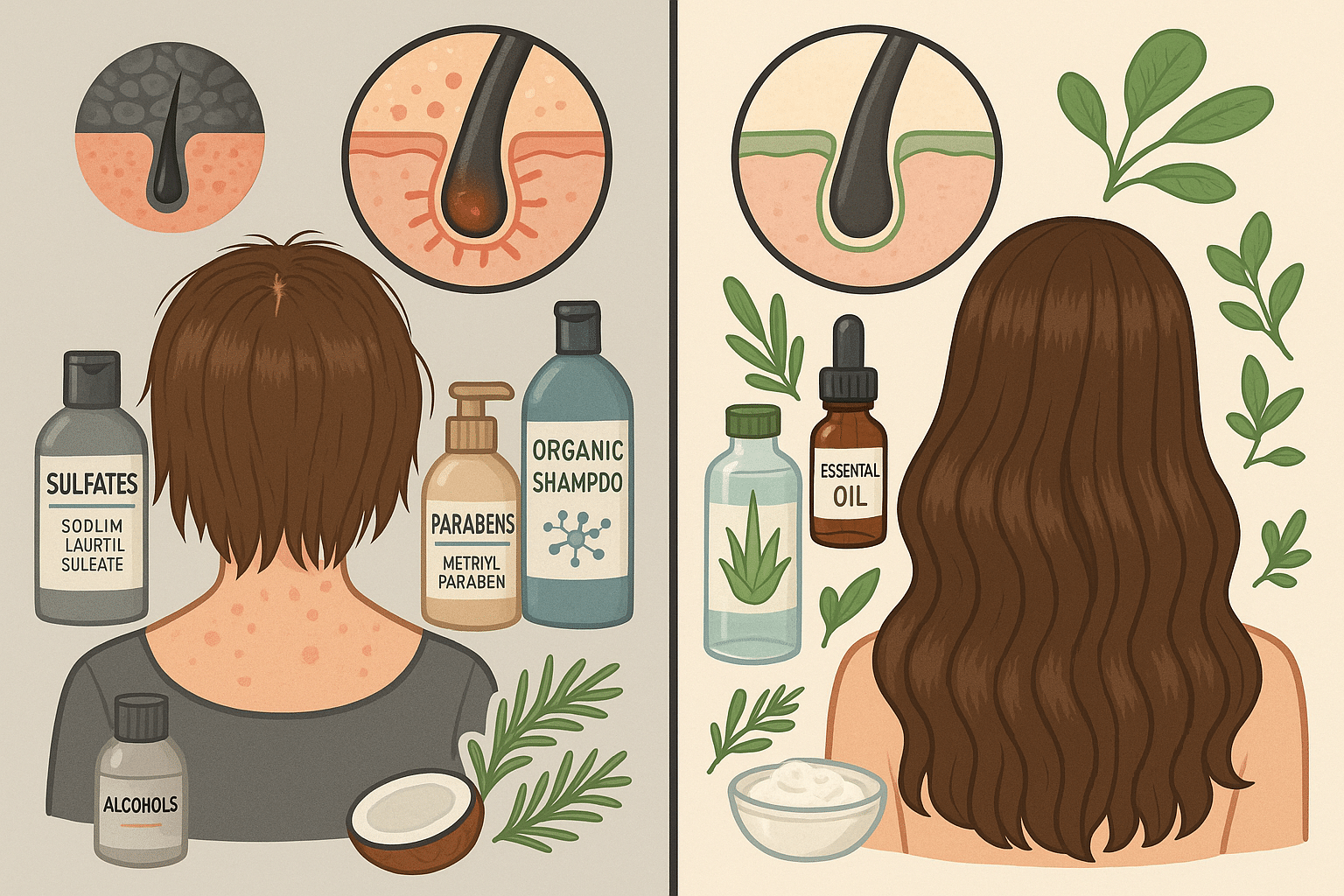
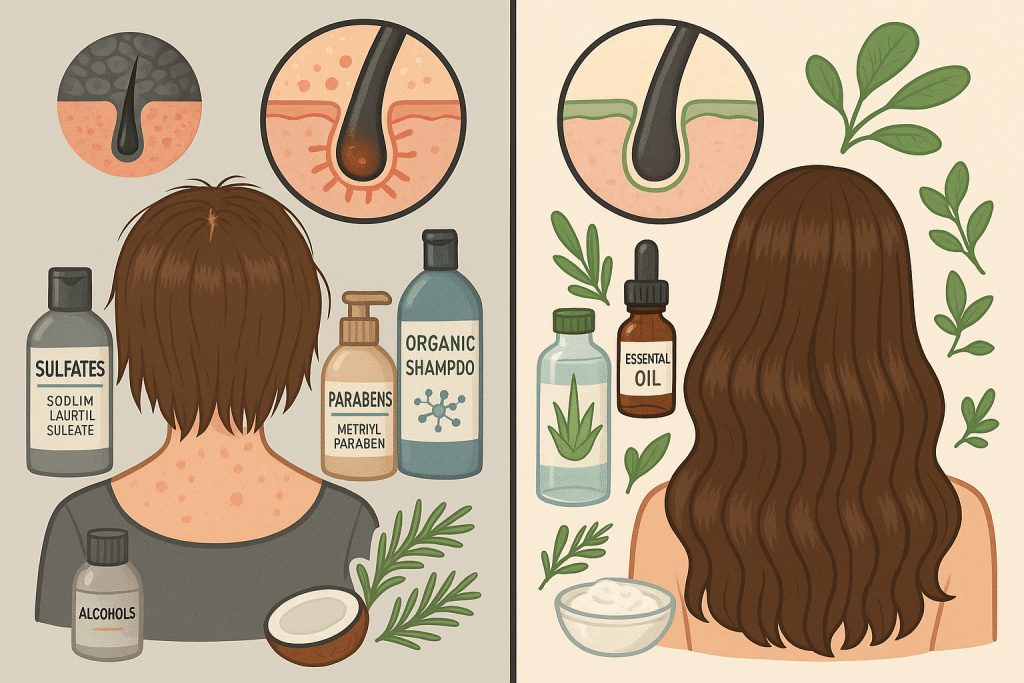
Why Understanding Types of Hair Care Products Matters
Hey hair lovers! What are the types of hair care products and why do they matter? Over the years, I’ve been on my own hair journey and knowing what each product actually does has completely transformed how I care for my hair.
The global hair care market is poised to reach $111.98 billion by 2026, as industry data highlights.
Whether it’s the dreaded frizz, dryness, or you just strive for that luxurious shine, having knowledge about which products to use can significantly boost your confidence from “meh” hair days to a “yes, I woke up like this!” kind of vibe.
When we talk about types of hair care products, it helps to break them down into categories that serve different purposes in your hair care routine. Think of them as your hair’s best friends.
There’s a reason why people say your hair is the crown you never take off, let’s talk about it—how you care for it reflects not only your approach to beauty but also your self-expression and daily rituals.
The Main Types of Hair Care Products Explained
The main types of hair care products serve distinct roles along your hair care routine. These include:
- Shampoos: The cleansing base for removing dirt and oil
- Conditioners: The hydrating essentials for moisture retention
- Hair Masks: The intensive care treatments for deep nourishment
- Leave-in Conditioners: The protective layers against environmental damage
- Oils and Serums: The finishing touches for smoothness and shine
- Styling Products: The creative aids in holding, texturizing, or defining styles
- Scalp Treatments: The foundational care targeted at scalp health
Want to learn more about optimizing your regimen? How to Build a Hair Care Routine or check out The Science of Shampoo for in-depth tips.
The environmental impact of hair care can’t be overlooked—and if you’re curious about how everyday choices add up, explore eco friendly hair products for a sustainable future and discover why more people are now looking for sustainable options when refreshing their shelf.
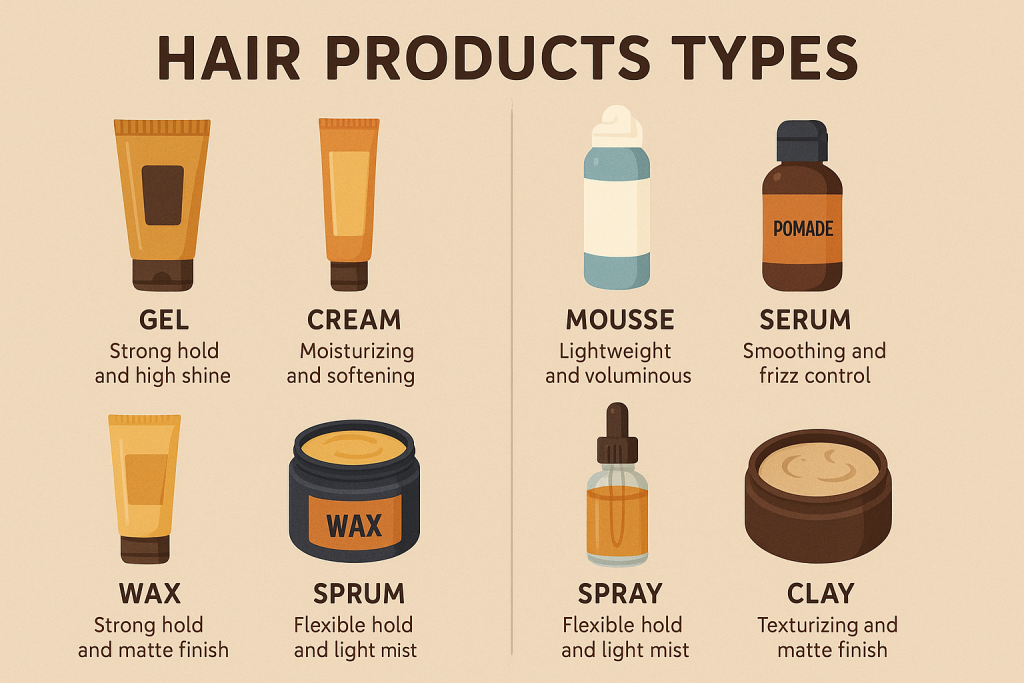
In-depth Guide to Each Product Type
Shampoos
- What they do: Remove dirt, oil and product buildup.
- Key benefits: Establish a clean base to facilitate other hair product absorption.
If your curiosity pulls you beyond what ingredient lists actually mean, you may also consider why an increasing number of brands prioritize plant-based cleansers. For instance, the best vegan hair care products are often formulated to cleanse gently without harsh detergents, making them an ideal choice for health- and eco-conscious routines.
Conditioners
- What they do: Restore moisture, detangle and smooth the hair cuticle.
- Key benefits: Improve manageability, add shine, prevent breakage.
- Best for: Regular use after shampooing.
- Types include: Rinse-out, deep conditioning, color-protecting, volumizing.
- Real talk: “Applying conditioner mid-length to ends (not on the scalp) was a game-changer for my fine hair – all the moisture without the weigh-down!”
Not all conditioners are created equal—some are designed for thick, unruly strands, while others cater to volume seekers. If understanding what sets them apart fascinates you, exploring ingredient breakdowns in the best vegan hair care products reveals how plant-powered blends target specific hair needs.
Hair Masks
- What they do: Provide intensive nourishment and repair
- Key benefits: Deep conditioning, strengthening, restoring damaged hair
- Best for: Weekly or bi-weekly treatments
- Types include: Protein treatments, moisture masks, bond builders
- Real talk: “When my hair feels particularly dry or damaged, I’ll sleep in a hair mask overnight (with a shower cap) for extra healing.”
Every hair mask isn’t just about extra nourishment—it can be a foundation for shifting toward environmentally conscious routines. Techniques like using masks during low-water wash routines are core elements of eco friendly hair care practices that help minimize waste without sacrificing results.
Leave-in Conditioners
- What they do: Provide ongoing hydration and protection.
- Key benefits: Detangle, prevent frizz, protect from heat and environment.
- Best for: Daily moisture between washes.
- Types include: Sprays, creams, milks, detanglers.
- Real talk: “I never skip leave-in conditioner on my wavy hair – it’s the difference between defined curls and frizz city.”
For those who style on-the-go or face unpredictable weather, the nuances between different leave-in formulas can make or break a routine. If selection feels overwhelming, discovering how eco friendly hair care practices shape ingredient choices in leave-ins uncovers which formulas align with your priorities—both for hair and planet.
Oils & Serums
- What they do: Seal in moisture, add shine, tame frizz
- Key benefits: Finishing touch that improves appearance and texture
- Best for: Daily use on dry or styled hair
- Types include: Lightweight oils (argan, jojoba), anti-frizz serums, heat protectants
- Real talk: “Just 2-3 drops of hair oil makes my dry ends look instantly healthier – it’s like magic in a bottle.”
There’s an ongoing conversation about which oils work best for different hair goals, with many turning to best vegan hair care products that include plant oils for a natural, ethical boost of shine and softness.
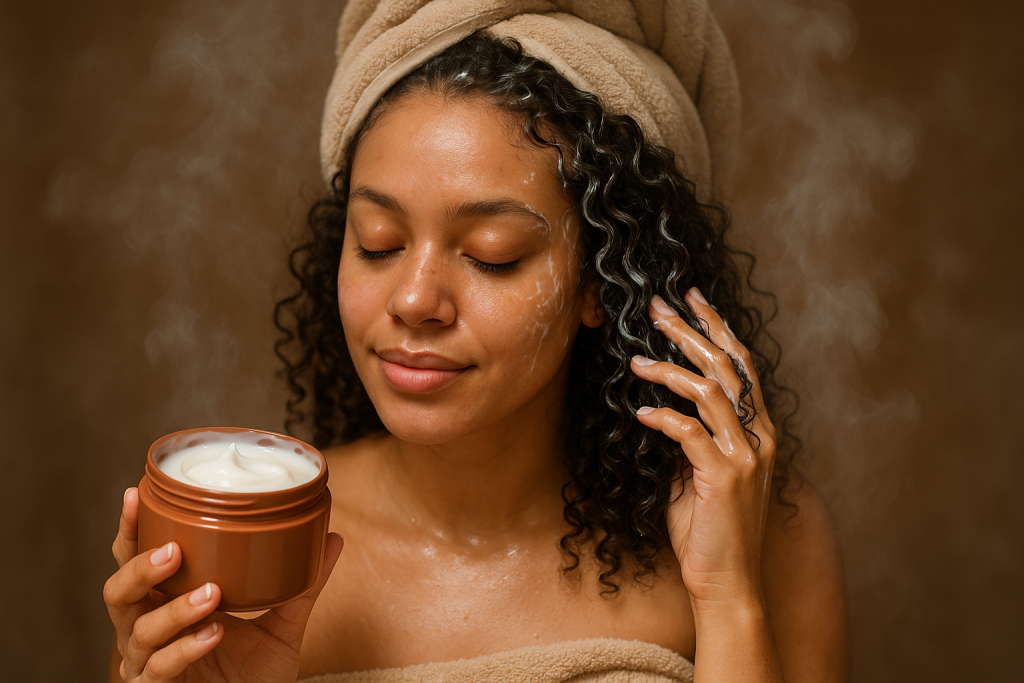
Product Comparison: Masks vs. Serums vs. Oils
| Product | Best For | Ideal Hair Types | Price Range | Application |
|---|---|---|---|---|
| Hair Masks | Deep repair, moisture | Damaged, dry, chemically treated | $15-$50 | Weekly, 10-30 minutes |
| Hair Serums | Frizz control, shine | All types, especially frizzy | $10-$40 | Daily, small amount |
| Hair Oils | Sealing, shine | Medium to coarse, dry | $8-$45 | Daily or as needed, few drops |
You’ll notice that some products are better suited for quick fixes while others work overtime to strengthen from within. If you have curls that demand instant results, quick curly hair products 35 for rapid hydration and definition offer ingredient highlights that stand out in the daily lineup.
Top Recommended Products
- Shampoo: Briogeo Be Gentle Be Kind Avocado + Quinoa Co-Wash
- Conditioner: Olaplex No. 5 Bond Maintenance Conditioner
- Mask: Amika Soulfood Nourishing Hair Mask
- Leave-in: Davines OI All in One Milk
- Oil: Verb Ghost Oil
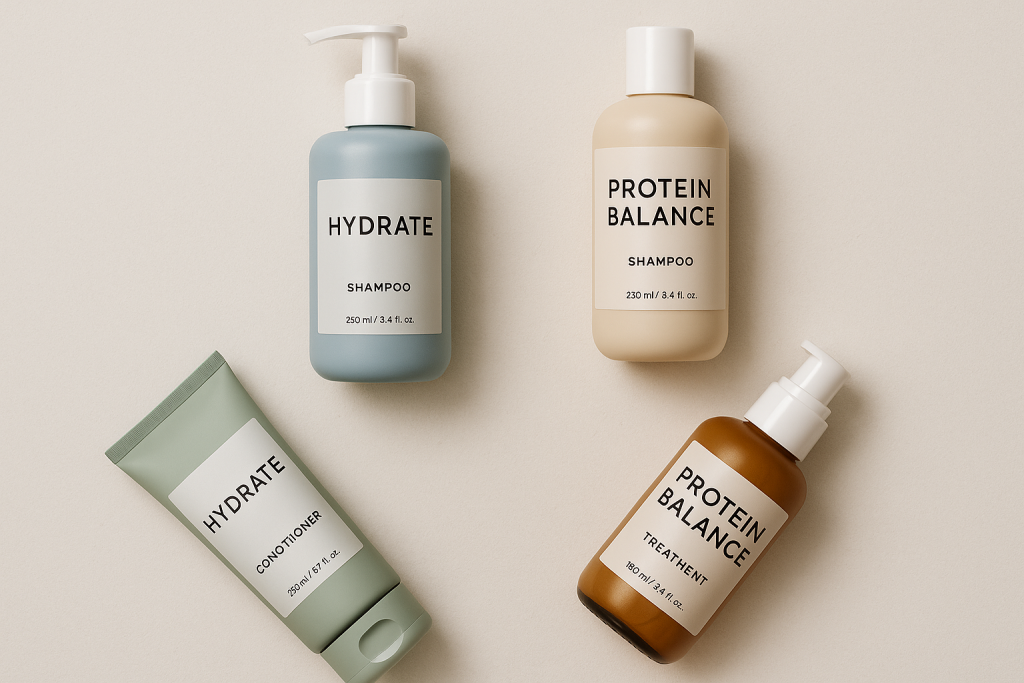
Matching Hair Care Products to Hair Types: Which Products Work for Your Unique Hair?
Finding the right types of hair care products for your specific hair type can feel overwhelming, but it is the secret to effective hair care routines. Your hair has a unique personality and it deserves products that understand its language.
In the curly hair world especially, routines must be tailored to both pattern and texture. If you’re ever left wondering which steps are indispensable for your spirals, a fully mapped curly hair routine broken down step-by-step uncovers why each process—from cleansing to styling—unlocks new levels of manageability.
Quick Hair Type Checklist
- Straight hair: Lightweight products, volumizing formulas
- Wavy hair: Lightweight moisturizers and curl enhancers
- Curly hair: Rich moisturizers and cream-based products
- Coily hair: Heavy moisturizers and oils
- Fine hair: Volumizing products, frequent cleansing
- Thick hair: Rich conditioners, smoothing serums
- Oily hair: Gentle clarifying shampoos
- Dry hair: Hydrating everything, deep conditioning
- Color-treated hair: Color-safe products, UV protectants
Meanwhile, an individual with fine, straight hair might benefit from a volumizing shampoo, a lightweight conditioner and a texturizing spray. The beauty of knowing product types is that you can mix and match to create the perfect routine for your skin.
And if you notice product overload or ingredient confusion creeping in, it might be time to adopt eco friendly hair care practices that streamline and clarify your regimen, supporting your hair’s true needs while protecting the planet.
Ingredient Glossary: Key Ingredients & Their Benefits
Being familiar with what is inside your products helps make wise choices for daily hair care. Here’s a brief guide to common hair care ingredients and their functions:
- Keratin: Strengthens hair shaft, reduces breakage.
- Argan Oil: Boosts shine, controls frizz, adds moisture.
- Coconut Oil: Deeply hydrates, reduces protein loss.
- Panthenol: Improves hair’s elasticity and moisture retention.
- Proteins: Repair damaged hair, increase strength.
- Silicones: Smooth and protect, caution for fine or buildup-prone types.
- Surfactants: Cleansing agents, some (like sulfates) can strip moisture from delicate or color-treated hair.
Tip: Curly, coily, or dry hair types should avoid strong sulfates or drying alcohols. If in doubt, check product labels carefully.
Sometimes your ingredient choices reflect both personal and global impact. Becoming aware of eco friendly hair care practices embedded in sourcing and formulation can shift your habits for both healthier hair and a lighter footprint.
For those that are ingredient purists or animal lovers, one of the biggest transformations in hair care comes from switching to best vegan hair care products featuring ethically sourced botanicals—find out how these swaps impact your hair’s softness, bounce, and resilience.
Expert-Recommended Hair Products & Routines
Ready to up your routine with recommended hair products? Here are expert picks and daily hair care tips for popular concerns:
Texture and heritage often intersect in unique ways, especially for those with curly textures shaped by cultural roots. The journey of embracing the beautiful chaos of Hispanic curly hair offers a perspective on how traditions and innovations can blend, guiding product routines tailored to these distinctive needs.
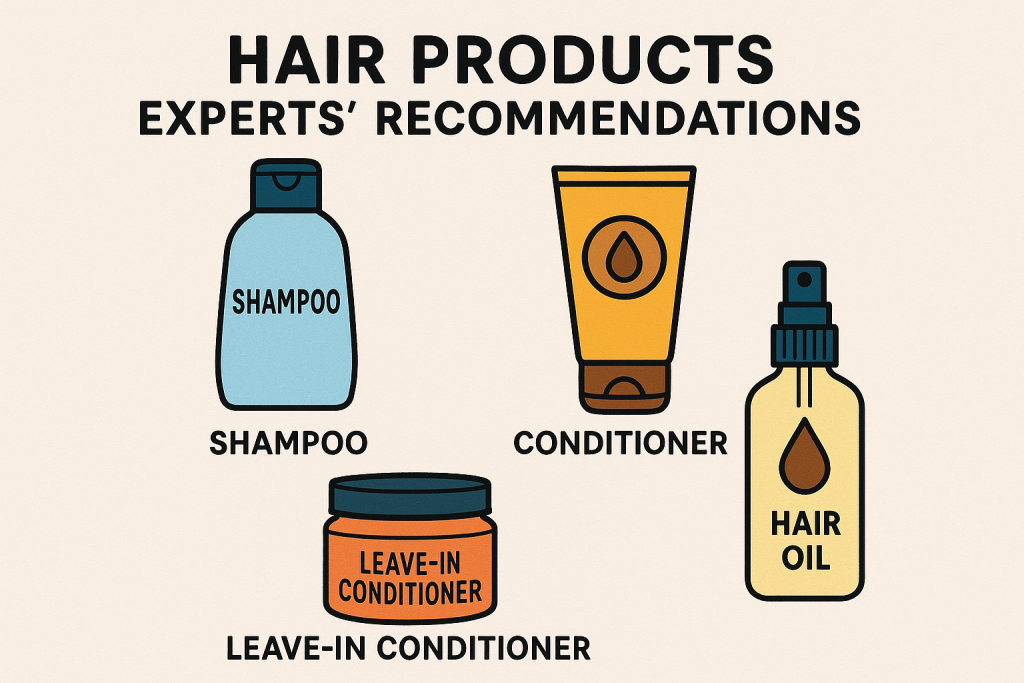
For Dry, Damaged Hair:
- Morning: Co-wash or sulfate-free shampoo → deep conditioner → leave-in cream → oil to seal
- Evening: Light misting of water → small amount of leave-in treatment
- Weekly: Overnight hair mask with a heat cap for deep penetration
For Fine, Limp Hair:
- Morning: Volumizing shampoo → lightweight conditioner only on ends → root lift spray
- Evening: Dry shampoo at roots for next-day volume
- Weekly: Clarifying shampoo to remove buildup
For Curly, Frizzy Hair:
Listen to what your hair is telling you. Consistency is essential for curls: focus on hydration, gentle cleansers, and avoid sulfates. A stylist tip: “Layer moisture—use a water-based leave-in, seal with oil, and finish with a curl cream for definition.”
For days when time is not on your side, there’s an entire spectrum of quick curly hair products 35 tailored for efficient styling and lasting results.
Product Comparison Tables: Finding Your Best Match
Let me help you navigate the sea of options with these quick comparison charts of some standout products in each category:
Choosing the right match sometimes means aligning your purchases with your values. For those exploring planet-friendly swaps, a comprehensive view of eco friendly hair care practices that go beyond just products can deepen your understanding of everything from packaging to water usage.
Shampoo Comparison
| Product | Best For | Key Ingredients | Price |
|---|---|---|---|
| Briogeo Don’t Despair, Repair! | Damaged hair | Algae extract, biotin | $36 |
| Verb Ghost Shampoo | All hair types | Moringa oil, sunflower seed extract | $18 |
| Pattern Beauty Hydration Shampoo | Curly/coily hair | Aloe vera, honey | $20 |
| Pureology Hydrate | Color-treated hair | Jojoba, green tea, sage | $30 |
| Living Proof Perfect Hair Day | Oily roots and dry ends | Patented OFPMA molecule and healthy natural ingredients | $29 |
Some of the best formulas in these comparisons are the result of years of product evolution—and if you’re trying to limit animal-based ingredients, it’s worth seeing how the best vegan hair care products combine innovation and ethics to match mainstream results.
Conditioner Comparison
| Product | Best For | Key Ingredients | Price |
|---|---|---|---|
| Olaplex No. 5 | Chemical damage | Bond-building technology | $28 |
| Davines LOVE Smoothing | Frizzy hair | Olive extract, minuta olive | $33 |
| Briogeo Curl Charisma | Curly hair | Rice amino acids, shea butter | $24 |
| Amika Normcore | Everyday use | Sea buckthorn, vitamin C | $20 |
| Aveda Invati Advanced | Thinning hair | Turmeric, ginseng | $34 |
Finding your perfect match often calls for a bit of trial and error, but these expert-backed recommendations are a great place to start.
How to Choose: FAQ on Choosing Hair Care Products
How do I know which hair product is right for me?
Identify your hair type (straight, wavy, curly, coily) and the primary concerns you want to address (such as dryness, frizz, or volume). Then, look for products that have similar or identical attributes and features. For instance, curly hair usually requires more moisture, while fine hair benefits from lightweight products. Don’t be afraid to test a few sample sizes before spending your money on the full product.
What ingredients should I avoid for my hair type?
For curly or dry hair, avoid sulfates and drying alcohols. The use of heavy butters and oils can weigh the hair down. For sensitive scalps, both synthetic fragrances and essential oils might be irritating. Always perform a patch test with new products if you have sensitive skin.
How Many Products Do I Really Need in My Hair Care Routine?
A basic routine entails a cleanser, conditioner and one to two styling products. Consider adding targeted treatments like masks or serums that address specific concerns. Quality matters more than quantity. Better to have a few solid products than a dozen mediocre ones.
How Often Should You Change Hair Products?
If your current products work well there is no need to change them. However, my hair needs change with the seasons and as I age. You could also rotate them seasonally (lighter for summer, more moisturizing for winter) or when your hair seems to need a change.
Is it better to use hair care products from the same line?
While brands obviously design their product lines to be used together, there is nothing wrong with mixing brands in a hair routine as long as the products are serving different purposes. The most important thing is that the products you use meet your hair needs and do not contain ingredients that cancel each other out.
What is a simple hair care routine for everyday health?
For a straightforward daily regimen, focus on the basics: cleanse, condition, protect and style. Cleanse with shampoo or co-wash (frequency depends on hair type), condition every time you cleanse, use a leave-in conditioner or heat protectant and then apply minimal styling products. Consistency is more important than complexity. For more, read our guide to building the perfect daily hair care routine.
We’ve journeyed through the wonderful world of hair care products together and I hope you’re feeling more confident about making choices that will love your unique hair back! The key is to know what your hair needs and to respond accordingly. Take a look at your current routine and pinpoint one area where you could upgrade—maybe a weekly mask or sulfate-free shampoo. Beautiful hair is not about perfection, but embracing your natural texture and taking proper care of it.
If you’re striving for a holistic approach, integrating eco friendly hair care practices into every step of your routine empowers you to care deeply for your hair while contributing to a more sustainable future.
References
- Hair care market report by Fortune Business Insights
- Natural hair care market analysis by KBV Research
- Hair care market research by Cognitive Market Research
- Statista Hair Care Market Outlook
- Hair care market trends report by SNS Insider
- HSA Cosmetics Hair Care Market Trends 2025-2026
- Grand View Research: US Hair and Scalp Care Market Outlook


Leave a Reply